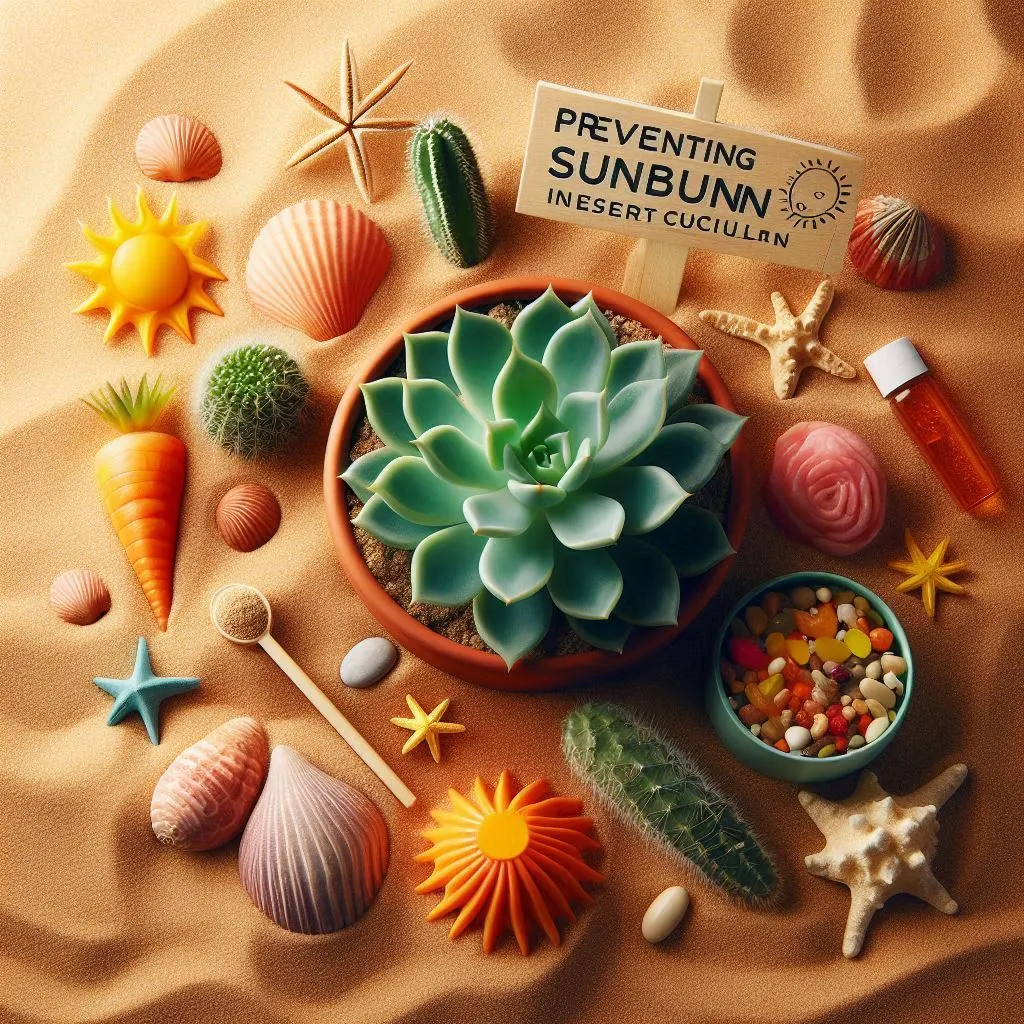Preventing Sunburn in Desert Succulents

1. What is Sunburn?
Sunburn in plants happens when they get too much sun exposure, just like how our skin can get burned from too much sunlight. For desert succulents, which are plants that store water in their leaves and stems to survive in dry environments, sunburn can be a serious problem. When succulents receive more sunlight than they can handle, their tissues can become damaged, leading to visible signs of sunburn such as brown or reddish spots on their leaves, wilting, or a dried-out appearance.
2. Types of Desert Succulents
Desert succulents come in many shapes and sizes, each adapted to thrive in arid conditions. Cacti are perhaps the most well-known desert succulents, with their spiny stems and ability to store water efficiently. Aloe vera, with its fleshy, elongated leaves containing healing gel, is another popular desert succulent known for its hardiness. Echeverias, with their rosette-shaped leaves and vibrant colors, add beauty to desert landscapes. These plants have evolved special adaptations like thick, waxy coatings on their leaves to minimize water loss and tolerate intense sunlight, but they can still get sunburned if exposed to extreme conditions without protection.
3. Signs of Sunburn in Succulents
It’s important for succulent enthusiasts to recognize the signs of sunburn in their plants. Besides the obvious discoloration and wilting, sunburned succulents may also show signs of stress such as leaf drop or stunted growth. By regularly inspecting your succulents, you can catch sunburn early and take steps to prevent further damage.
4. Choosing the Right Location
One of the key strategies for preventing sunburn in desert succulents is selecting an appropriate location for them. While these plants love sunlight, they can’t withstand prolonged exposure to intense midday sun, especially during hot summer months. Opt for locations that receive partial sun or filtered sunlight, such as under a light shade tree or on a porch with a sunshade. This way, your succulents can enjoy the light they need without risking sunburn.
5. Shade and Protection
Providing shade for your succulents is crucial, especially in regions with harsh sunlight. You can create shade using materials like shade cloth, umbrellas, or even by planting taller plants nearby to cast a natural shadow. Adjust the shade level based on the specific needs of your succulents and the intensity of sunlight they receive. Remember that some succulents may tolerate more sun than others, so it’s essential to know the light requirements of each species in your collection.
6. Watering Techniques
Proper watering is essential for succulents exposed to sunlight, as they are adapted to survive in dry environments. Water your succulents deeply but less frequently, allowing the soil to dry out slightly between waterings. Use well-draining soil mixes specifically formulated for succulents to prevent waterlogged roots, which can make plants more susceptible to sunburn and root rot. During hot weather, increase watering slightly to compensate for evaporation but avoid overwatering, which can be just as harmful as underwatering.
7. Protective Coverings
In addition to providing shade, using protective coverings can further shield your succulents from excessive sunlight. Mulch or decorative rocks around the base of potted succulents help retain soil moisture and regulate temperature, reducing stress on the plants. Be mindful not to cover the succulent’s leaves or stems with materials that can trap heat and cause burns. Choose coverings that allow airflow while providing the desired protection.
8. Caring for Sunburned Succulents
Even with preventive measures, sunburn can still occur, especially during heatwaves or sudden intense sunlight. If you notice sunburn on your succulents, act promptly to help them recover. Move affected plants to a shadier location immediately to reduce further stress. Trim off damaged leaves or stems using clean, sharp scissors or pruning shears to prevent infections. Adjust watering to provide slightly more moisture during the recovery period, but avoid overwatering, which can lead to fungal issues. With proper care and patience, most sunburned succulents can regain their health and resume normal growth.
Conclusion
Preventing sunburn in desert succulents requires a combination of careful observation, proper placement, shade provision, watering techniques, and protective measures. By understanding the unique needs of desert succulents and providing them with optimal growing conditions, you can enjoy healthy, vibrant plants in your garden or home. Regularly monitor your succulents for signs of stress or sunburn, and adjust your care routine as needed to ensure their well-being. With a little attention and proactive care, your desert succulents will thrive and delight you with their resilience and beauty for years to come.